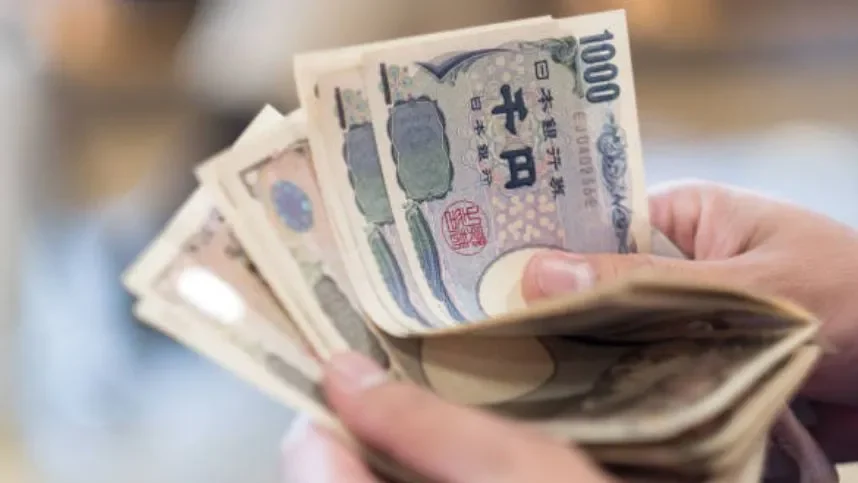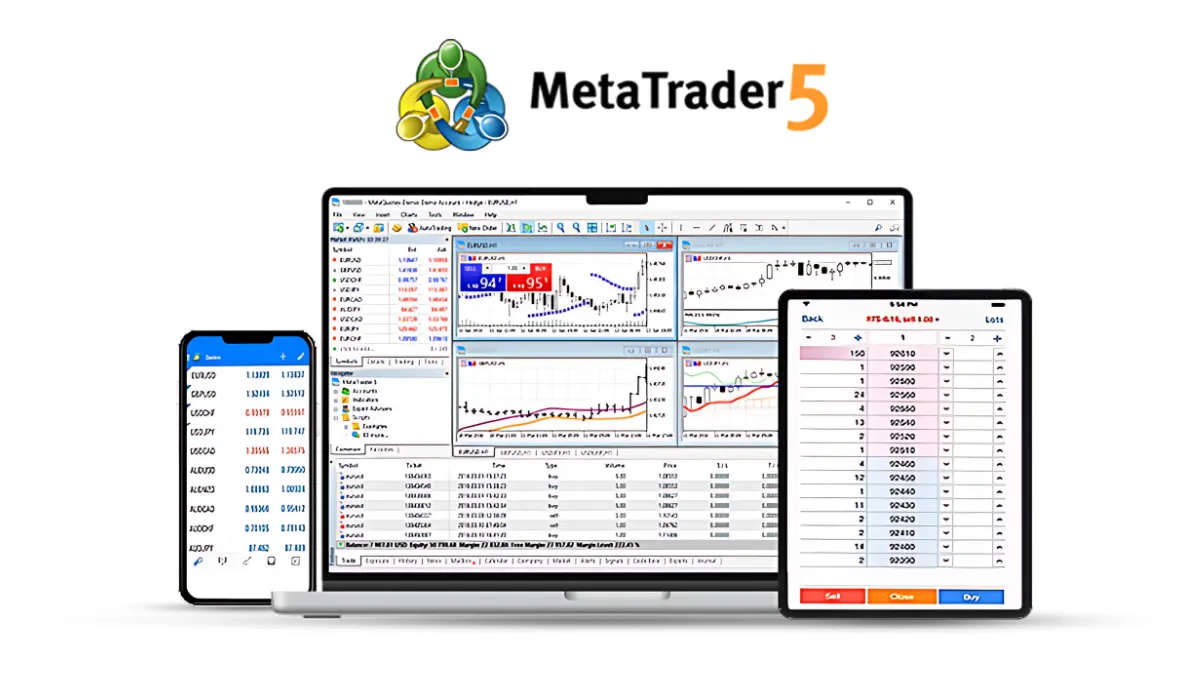In the world of foreign exchange margin trading, a special group is often mentioned - the "Mrs. Watanabe." This group of Japanese housewives, despite lacking a financial background, plays an important role in the foreign exchange market through a simple and effective strategy - Carry Trade. This article will take you deeper into this phenomenon, revealing the trading strategies, influence, and risks behind Mrs. Watanabe.
The core of Carry Trade is to take advantage of the interest rate differences between different countries' currencies for arbitrage. The specific operations are as follows:
You can think of it as borrowing money from a low-interest credit card and then depositing it into a high-interest bank account, profiting from the interest difference. In the foreign exchange market, this process is amplified, and leverage trading multiplies the carry income.
The term "Mrs. Watanabe" originates from Japan, representing housewives who use idle family funds for foreign exchange trading. Their emergence in the foreign exchange market is closely related to the following factors:

The carry trading model of Mrs. Watanabe has had a substantial impact on the foreign exchange market due to its large operational scale. When hundreds of thousands of investors simultaneously engage in carry trading, the inflow and outflow of funds exert significant pressure on exchange rates. For example:
The carry trading of Mrs. Watanabe is a unique phenomenon that closely combines culture, economy, and financial markets. With a simple investment strategy, they have carved out a niche in the foreign exchange market. However, behind carry trading lies the risks of exchange rate fluctuations and leverage, reminding us that while pursuing high returns, we must also maintain respect for the market.
In the world of foreign exchange margin trading, Mrs. Watanabe tells an extraordinary story in an ordinary role. Their successes and challenges not only inspire ordinary investors but also show us the tremendous influence of seemingly small forces in the financial market.
Q1: What is Carry Trade?
A1: Carry Trade is an investment strategy that uses the interest rate differences between different currencies to earn returns, usually by borrowing low-interest currency and investing in high-interest currency to obtain the carry.
Q2: Why is Mrs. Watanabe considered a typical representative of Carry Trade?
A2: "Mrs. Watanabe" represents a group of Japanese housewives who use family savings for foreign exchange trading, especially focusing on carry trading, and have a significant impact on the market.
Q3: What are the main risks of Carry Trade?
A3: The main risks include exchange rate fluctuations, high risks brought by leverage effects, and macroeconomic variables such as changes in interest rate policies that may lead to trading failures.
Q4: How to reduce risks in Carry Trade?
A4: Risks can be reduced in the following ways:
Q5: Is Carry Trade suitable for novice investors?
A5: Carry Trade has a certain threshold for novices, as it requires mastering leverage use, risk management, and market analysis skills. It is recommended that novices start with small trades to gradually familiarize themselves with market rules.
Q6: What are high-interest and low-interest currencies? What are their representatives?
A6: High-interest currencies refer to currencies with higher interest rates (such as the Australian dollar and New Zealand dollar), while low-interest currencies are those with lower interest rates (such as the yen and Swiss franc).
Q7: What impact does Mrs. Watanabe's Carry Trade have on the market?
A7: When a large number of investors engage in Carry Trade, it leads to the appreciation of high-interest currencies and depreciation of low-interest currencies; while capital inflow during market panic causes severe fluctuations in exchange rates.
Q8: What are the characteristics of Carry Trade compared to other foreign exchange strategies?
A8: The characteristics of Carry Trade are higher stability, with the main income coming from interest rate differences rather than short-term exchange rate fluctuations, making it more suitable for medium to long-term investors.
What is Carry Trade?
The core of Carry Trade is to take advantage of the interest rate differences between different countries' currencies for arbitrage. The specific operations are as follows:
- Borrow low-interest currency: For example, the Japanese yen, which has been a typical low-interest currency due to years of zero interest rate policy.
- Buy high-interest currency: For instance, the Australian dollar or New Zealand dollar, where high interest rates provide stable carry income.
- Earn carry income: Investors earn the interest rate difference between the two currencies while holding the high-interest currency, which becomes the main source of income.
You can think of it as borrowing money from a low-interest credit card and then depositing it into a high-interest bank account, profiting from the interest difference. In the foreign exchange market, this process is amplified, and leverage trading multiplies the carry income.
Mrs. Watanabe: The Investment Power of Housewives
The term "Mrs. Watanabe" originates from Japan, representing housewives who use idle family funds for foreign exchange trading. Their emergence in the foreign exchange market is closely related to the following factors:
- Cultural background: Japanese families typically consider savings as the core of financial management, but in the era of ultra-low interest rates, deposits yield almost no returns. To pursue higher returns, Mrs. Watanabe began exploring the foreign exchange market.
- Simple strategy: Carry Trade is an easy-to-understand and relatively simple strategy to operate. For housewives lacking professional financial knowledge, this is a low-threshold way to enter the market.
- Leverage amplifies returns: Foreign exchange margin trading provides leverage tools, allowing them to make large operations with small amounts of capital, maximizing carry income.

Advantages and Risks of Carry Trade
Advantages:
- Stable carry income: When currency exchange rates are stable, holding high-interest currency can bring stable returns.
- Leverage multiplier effect: Leverage allows Mrs. Watanabe to convert limited funds into larger investment scales, obtaining higher returns.
Risks:
- Exchange rate fluctuations: If the exchange rate of high-interest currency falls, Mrs. Watanabe may not only lose carry income but also suffer greater capital losses. For example, during the financial crisis, severe fluctuations in exchange rates forced most carry trades to close positions.
- Leverage risk: Leverage is a double-edged sword; while it amplifies profits, it also magnifies losses. When market fluctuations exceed expectations, leverage trading may lead investors to incur unbearable losses.
- Macroeconomic variables: The uncertainty of global financial markets, such as policy changes or geopolitical risks, may pose significant threats to carry trading. For instance, if the Bank of Japan raises interest rates, the yen will no longer be a low-interest currency, and Mrs. Watanabe's arbitrage strategy will lose its foundation.
The Influence of Mrs. Watanabe on the Market
The carry trading model of Mrs. Watanabe has had a substantial impact on the foreign exchange market due to its large operational scale. When hundreds of thousands of investors simultaneously engage in carry trading, the inflow and outflow of funds exert significant pressure on exchange rates. For example:
- Driving up the exchange rate of high-interest currency: When a large amount of capital flows into high-interest currencies like the Australian dollar or New Zealand dollar, the exchange rates of these currencies will be pushed higher.
- Capital inflow effect: When market risks increase and Mrs. Watanabe withdraws investments, a large amount of capital flows back to low-interest currencies, causing severe fluctuations in exchange rates.
Conclusion
The carry trading of Mrs. Watanabe is a unique phenomenon that closely combines culture, economy, and financial markets. With a simple investment strategy, they have carved out a niche in the foreign exchange market. However, behind carry trading lies the risks of exchange rate fluctuations and leverage, reminding us that while pursuing high returns, we must also maintain respect for the market.
In the world of foreign exchange margin trading, Mrs. Watanabe tells an extraordinary story in an ordinary role. Their successes and challenges not only inspire ordinary investors but also show us the tremendous influence of seemingly small forces in the financial market.
Frequently Asked Questions
Q1: What is Carry Trade?
A1: Carry Trade is an investment strategy that uses the interest rate differences between different currencies to earn returns, usually by borrowing low-interest currency and investing in high-interest currency to obtain the carry.
Q2: Why is Mrs. Watanabe considered a typical representative of Carry Trade?
A2: "Mrs. Watanabe" represents a group of Japanese housewives who use family savings for foreign exchange trading, especially focusing on carry trading, and have a significant impact on the market.
Q3: What are the main risks of Carry Trade?
A3: The main risks include exchange rate fluctuations, high risks brought by leverage effects, and macroeconomic variables such as changes in interest rate policies that may lead to trading failures.
Q4: How to reduce risks in Carry Trade?
A4: Risks can be reduced in the following ways:
- Use stop-loss orders to limit potential losses.
- Control leverage ratios to avoid overtrading.
- Continuously monitor market dynamics and anticipate possible policy changes.
Q5: Is Carry Trade suitable for novice investors?
A5: Carry Trade has a certain threshold for novices, as it requires mastering leverage use, risk management, and market analysis skills. It is recommended that novices start with small trades to gradually familiarize themselves with market rules.
Q6: What are high-interest and low-interest currencies? What are their representatives?
A6: High-interest currencies refer to currencies with higher interest rates (such as the Australian dollar and New Zealand dollar), while low-interest currencies are those with lower interest rates (such as the yen and Swiss franc).
Q7: What impact does Mrs. Watanabe's Carry Trade have on the market?
A7: When a large number of investors engage in Carry Trade, it leads to the appreciation of high-interest currencies and depreciation of low-interest currencies; while capital inflow during market panic causes severe fluctuations in exchange rates.
Q8: What are the characteristics of Carry Trade compared to other foreign exchange strategies?
A8: The characteristics of Carry Trade are higher stability, with the main income coming from interest rate differences rather than short-term exchange rate fluctuations, making it more suitable for medium to long-term investors.
Hi, We are the Mr.Forex Research Team
Trading requires not just the right mindset, but also useful tools and insights.Here, we focus on Global Broker Reviews, Trading System Setup (MT4 / MT5, EA, VPS), and Forex Trading Basics.
We personally teach you to master the "Operating Manual" of financial markets, building a professional trading environment from scratch.
If you want to move from theory to practice:
- Help share this article to let more traders see the truth.
- Read more articles on Broker Tests and Forex Education.





